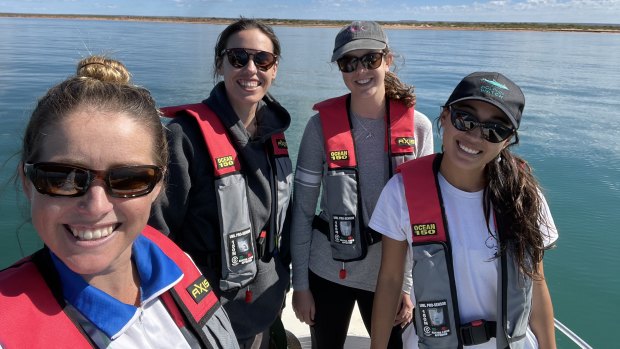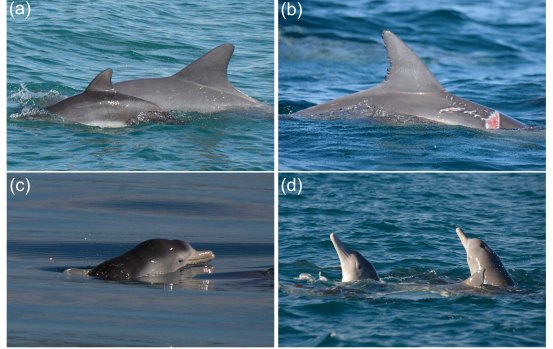Dolphins threatened while biodiversity hotspot Exmouth Gulf remains unprotected

Groundbreaking research has given new firepower to a campaign to include Exmouth Gulf on the World Heritage List alongside the neighbouring Ningaloo Marine Park.
Researchers from the University of Western Australia and Flinders University Cetacean Ecology, Behaviour and Evolution Lab have confirmed the Gulf is home to globally significant dolphin and whale populations — species they say require protection from proposed expansions to the already industrialised area.
Research team Kate, Amelia, Bailey and Tamara on the Exmouth Gulf. Credit:Kate Sprogis
The research showed threatened animals shared the waters in both the Marine Park and the Gulf, feeding, socialising, and resting in the shallow waters all along the western coastline.
UWA’s Kate Sprogis, one of the lead researchers in the new study published in Wildlife Research on Monday, focused on two Dolphin species — the Australian humpback dolphin and the Indo-Pacific bottlenose dolphin.
She worked with a team including Evolution Lab research leader Professor Guido Parra, and surveyed more than 800 kilometres of coastal waters between the Marine Park boundary and into the Gulf, taking photographs of the dolphin’s unique dorsal fins to track their movements.
“Even though they’re right next to each other, Exmouth Gulf is not protected, it’s got no conservation measures,” she said.
“They’re planning to put a deepwater port in the area where these animals live, potentially for oil and gas, for shipping, for the navy, for cruise ships, and it will be dredged.
“A lot more ships will be coming in which could create a lot of noise, boat strike, habitat loss, all these sorts of impacts.”
The state government has indicated it will create a marine park in the eastern part of Exmouth Gulf and a coastal reserve in the Qualing Pool area, south of Exmouth Marina.
But Sprogis said while this was a great step, it was the western part of the Gulf which held more of a connection to the Ningaloo Marine Park.
Bottlenose and humpback dolphins were tracked using their individualised dorsal fins.Credit:Kate Sprogis
“They’ve also not actually stated that it’s the marine waters … so far, it’s only the freshwater pool that’s there and the surrounding land, so it’s not actually, as of yet, the marine environment,” she said.
Protect Ningaloo director Paul Gamblin said the research had confirmed Exmouth Gulf was extremely important for marine fauna.
“We believe it will create even more expectation for conservation of Exmouth Gulf,” he said.
“For us, it’s scientific confirmation of the importance of Exmouth Gulf for these threatened and near-threatened species.
“There is also a global aspect to this — we know the Gulf and the Reef are increasingly important habitat areas for species like these dolphins from a global perspective.”
Gamblin said this science added further weight to an already strong case for Exmouth Gulf to receive national and world heritage listing, which UNESCO already recommended when Ningaloo was added to the World Heritage List.
The research team plans to conduct further boat-based studies in the region to assess any impacts of
increasing human activity in Gulf waters.
Our Breaking News Alert will notify you of significant breaking news when it happens. Get it here.
Most Viewed in National
From our partners
Source: Read Full Article

